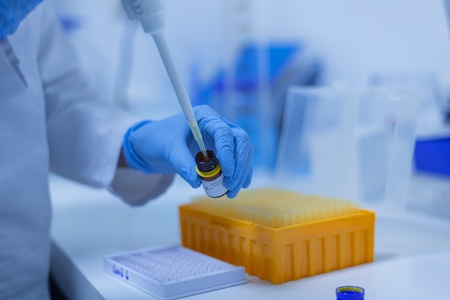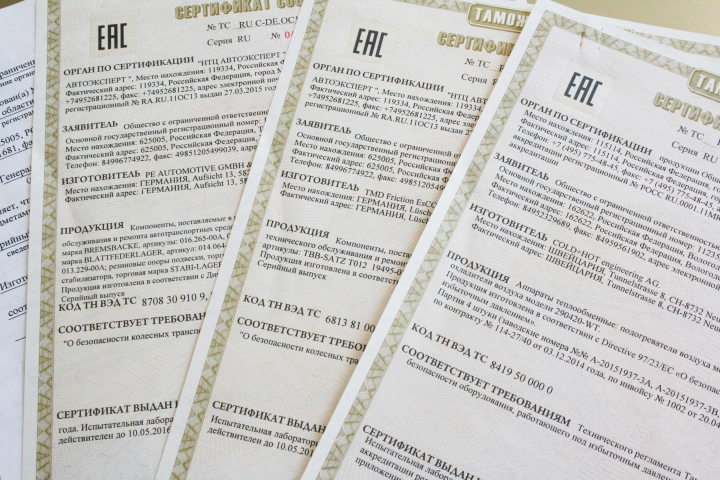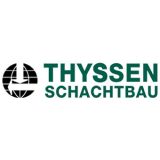
Type examination is often a mandatory step in the EAC conformity assessment. It is used in order to test a representative sample of the product for conformity with the requirements of the Eurasian Union Technical Regulations and check whether the product is suitable for the intended application.
In order to apply for the EAC Certificate, the EAC Declaration or the GOST R Certificate, the products must pass appropriate tests.
Performance of type examinations
Only accredited testing laboratories are allowed to perform type examinations for EAC certification. An accredited laboratory means that:
- it possesses the respective accreditation of the Federal Service for Accreditation (Rosaccreditation for example)
- it is listed in the unique register of testing laboratories (centers) of the Eurasian Union
The requirements for the testing laboratories are specified in the following norms
- GOST R 51000.4-2008 General requirements for accreditation of testing laboratories.
- GOST ISO / IEC 17025-2019 eneral requirements for the competence of testing and calibration laboratories
Type examinations may only be performed on the manufacturer’s site and with the manufacturer’s test equipment, if the test equipment has been approved in advance by the certification body and an accredited expert for the EAC certification is present during the type examinations to ensure the objectivity of the type examinations.
If the EAC declaration is conducted according to scheme 1D or 2D, the examinations may also be carried out in the manufacturer’s own production laboratory. However, the technical regulations must also be taken into account. According to the following technical regulations, type examinations may only be performed in an accredited test laboratory:
- TR CU 007/2011 On safety of the products for children and teenagers
- TR CU 009/2011 On safety of perfumes and cosmetic products
- TR CU 017/2011 On safety of light industry products
- TR CU 025/2012 On safety of furniture
Type of tests
In general, there is just one type of tests, which is the safety test. Depending on the product, also other safety indicators are taken into account, such as electrical, chemical, microbiological safety etc. However, tests are still subdivided in two further categories:
- the sample is tested, but not destroyed: this applies for expensive or unique products
- the sample is destroyed and then disposed by the laboratory. Information on this will be given always before the order.
Testing procedure
For EAC certification, only the certification body may refer the samples to the laboratory for testing. The certification body collects a set of documents received from the manufacturer (or his authorized representative) and the importer.
In order to carry out type examinations, the following documents must be sent with the sample:
- Application for certification examination prepared by the certification body
- Instruction manual in Russian
- if necessary also technical specification if the product is manufactured in Russia
In any case, a detailed list of the documents required by the Technical Regulations, should be provided.
The type examination is carried out according to a specific program and method, as specified in the norms that can be found in the appendix of the Technical Regulations. The standards were established on the basis of the generally accepted method of certification testing and depending on the type of product. The table shows some standards for specific product groups.
| TR CU 010/2011 On safety of machinery and equipment | |
|---|---|
| GOST 12.2.003-91 | Occupational safety standards system. Industrial equipment. General safety requirements. |
| TR CU 004/2011 On safety of low-voltage equipment | |
| GOST IEC 60335-1-2015 | Household and similar electrical appliances. Safety. Part 1. General requirements |
| TR CU 020/2011 On electromagnetic compatibility | |
| GOST 30804.6.2-2013 (IEC 61000-6-2:2005) | Electromagnetic compatibility of technical equipment. Immunity of technical equipment intended for use in industrial environments. Requirements and test methods |
| TR CU 032/2013 On safety of pressure equipment | |
| GOST 34347-2017 | Steel welded vessels and apparatus. General specifications. |
| TR CU 009/2011 On safety of perfumes and cosmetic products | |
| GOST 31696-2012 | Cosmetic hygienic washing productions. General specifications |
| TR CU 017/2011 On safety of light industry products | |
| GOST 30327-95 | Shirts. Specification |
| TR CU 019/2011 On safety of personal protective equipment | |
| GOST ISO 13688-2015 | Protective clothing. General requirements. |
| TR CU 025/2012 On safety of furniture | |
| GOST R 56008-2014 | Conformity assessment. Procedure for obligatory confirmation of product compliance to requirements of technical regulation of the Customs union “On safety of furniture production” |
The program and methodology can be developed both by the manufacturer and by the experts of the certification body.
In some cases it is not necessary to carry out a type examination, if this is not required by the technical regulation. For example, for the conformity assessment procedure according to scheme 9c or 6c no type examination is needed.
Samples for the testing procedure
There are certain rules that must be followed when sending samples for testing. These rules, as well as answers to questions regarding the correct selection of samples, the required number of samples, the exact testing procedure, etc., can be found in the article Selection and shipment of samples for EAC certification and EAC declaration.
To simplify the shipping of samples, we have compiled a list of tips, which you can find in the article Uncomplicated sample shipments to Russia.
Test report
The results of the tests are entered in the test report.
A test report is an official document which is issued by the testing laboratories after having conducted the certification tests. It confirms the compliance of the product with the specified technical standards.
A certificate of conformity or declaration is issued on the basis of the expert opinion prepared together with the test report.
The test report must contain the following information:
- basis of the tests
- information on the manufacturer of the products
- description of the samples
- testing methods
- date
- results
Further information on the scope of the test report, the most frequently tested parameters, and the testing procedure can be found in the article Test Report for EAC Conformity Assessment.
Period of validity of a test report
The test report is valid for one year from the date of issue if the protocol has been applied for as part of mandatory certification. For further requests, the test reports will be issued for six years. If you require the test report for voluntary certification, the validity period is agreed upon in consultation with the notified body.
The laboratory is obliged to keep a copy of the protocol for at least 3 years.
Compliance with EU and US sanctions in testing of product samples

For EAC certification and EAC declaration, in many cases testing of product samples in accredited laboratories is required.
Here, the sanctions regulations of the European Union and the United States play a central role: shipping samples to Russia or Belarus, cooperating with listed testing laboratories, or delivering certain goods may be legally prohibited. A violation not only jeopardizes business relationships but may also have criminal and civil consequences.
The situation is particularly critical when samples are to be sent to laboratories or partners that are on international sanctions lists. Even if the technical regulations are met, legal certainty is lacking in such cases. Manufacturers outside the EAEU must therefore ensure that testing and examination of the samples are organized in compliance with sanctions.
Another risk is that shipments of samples may be blocked at the border or rejected by customs authorities. Even a formally correct EAC certificate does not protect against economic losses in such cases. It is therefore crucial to adapt the testing strategy to the applicable sanctions regulations and to use legal alternatives.
Schmidt & Schmidt offers a legally compliant solution via Kazakhstan. As a member state of the EAEU, Kazakhstan is authorized to issue EAC certificates and EAC declarations. Through our local offices, we organize the execution of tests as well as the secure transport of samples in accordance with European and American sanctions regulations. This allows our clients to have their products tested legally while still gaining access to the EAEU market.
Read more on this topic in our article “EAC Certification amid EU and US Sanctions against Russia and Belarus”.
Duration and costs of EAC type examination
The duration and costs associated with type examination for EAC certification or EAC declaration depend on the required quantity and complexity of the examinations. The exact conditions of the EAC certification are always determined individually based on the required documentation.













































